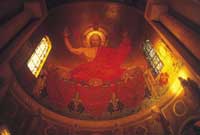Velbon And Hakuba Carbon-Fiber Tripods
As the manufacturer of numerous
tripods, the Velbon name has been well known in the US for many years,
particularly for very affordable and ultralight models. Recently however,
some important changes have occurred. The Velbon Tripod Co. of Japan
expanded its line of high-end models and magnesium alloy accessories;
then, it assigned distribution to Hakuba USA Inc. Now, this corporation
distributes two distinct brands: Velbon and Hakuba. |
|||
Carmagne Characteristics.
Recommended for loads up to 14 lbs. The Velbon Carmagne 630 features three
section legs and weighs only 3 lbs. Aside from the carbon-fiber tubes,
lightweight is maintained through the use of magnesium alloy components,
instead of cast aluminum. Its maximum extended height is 63.4" or
53" when the center post is retracted for maximum rigidity. Tall
photographers may feel that this is a bit short, but this model folds
down to a short 22.8" so it will fit into a large suitcase or duffel
bag, ideal when traveling by air. |
|||
Evaluation.
I worked with the Carmagne 630 frequently, often with equipment weighing
8 lbs. Occasionally I switched to a 300mm f/2.8 telephoto for a total
weight of 12 lbs, approaching the limits of this tripod. During the test
period, I made the following notes: |
|||
Hakuba Model.
A less expensive tripod, the Hakuba HG-6230C is another carbon-fiber model
with three section tubular legs. This tripod is 8 oz heavier because it
sports conventional aluminum alloy hardware. The center column lock consists
of a screw, but there is a secondary tension control collar, too that
prevents slippage even with heavy photo equipment. |




































